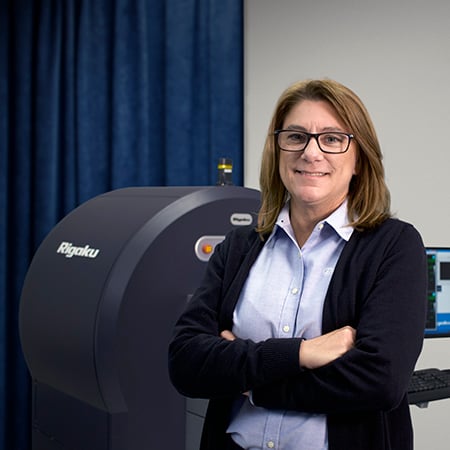Decoding Defects: Failure Analysis Using X-ray CT
2. Structural Failure Analysis

This is a written summary of a live webinar presented on May 22, 2024. The recording and resources are available on the recording page.
Presented by:

This is a written summary of the webinar Decoding Defects: Failure Analysis Using X-ray CT
2. Structural Failure Analysis.
Understanding structural failure: Why it matters
Structural failure analysis is key to keeping our everyday world safe and reliable. By exploring why materials and structures fail, we gain the insights needed to make things stronger and longer-lasting. This field is crucial for engineers, scientists, and manufacturers who work on products designed to withstand time and wear—whether in aerospace, construction, or consumer products. By learning how and why failures occur, we can design safer, more efficient systems.
Structural failures can lead to serious consequences, from bridge collapses to in-flight aircraft issues. Failure analysis helps prevent such risks, not only saving lives but also protecting investments and reputations. It allows professionals to spot weak areas and enhance product performance and durability.
Causes and types of structural failures
Failures usually happen due to a mix of factors: material defects, design flaws, or environmental conditions. Fractures are a common failure type. They occur when a material can’t handle applied stress. Simple fractures arise from forces exceeding a structure’s capacity, while impact fractures result from sudden, highly concentrated forces. Fatigue fractures develop over time under repeated stress, and environment-assisted fractures occur due to conditions like corrosion or heat. Each type requires unique solutions for prevention.
Types of fracture
- Simple fracture
- Impact fracture
- Fatigue fracture
- Environment-assisted fracture
 Simple fracture
Simple fracture
 Impact fracture
Impact fracture
 Fatigue fracture
Fatigue fracture
 Environment-assisted fracture
Environment-assisted fracture
How X-ray CT supports structural failure analysis
Using X-ray CT to identify weak points
X-ray computed tomography (CT) has transformed failure analysis by allowing us to look inside materials without damaging them. This 3D imaging method reveals defects like pores or cracks that may not be otherwise visible, helping engineers find weak points that could lead to failure.
Typical structural weak points
- Sharp angle
- Cracks
- Pores/voids
By creating detailed digital models of an object, CT scans offer insights that are critical for evaluating parts as complex as aircraft components or medical implants, leading to safer, more reliable designs.

How X-ray CT helps prevent failures
X-ray CT provides a non-invasive way to inspect materials, making it ideal for examining valuable or one-of-a-kind items. It helps detect issues early, allowing for fixes before costly failures occur. With its adaptability, CT can also be combined with other techniques for a complete view of a structure’s health, making it an essential tool in modern failure analysis.
Real-world examples of failure prevention
Industries like aerospace and automotive rely on X-ray CT to improve safety and durability. In aerospace, CT detects micro-cracks in turbine blades, preventing potential catastrophes. In the automotive industry, it is used to check welds and composite materials, ensuring vehicle safety. Medical fields benefit, too. Scanning implants with CT reveals weaknesses that lead to design improvements, showcasing CT's wide-ranging impact on quality and reliability.
Here's a quick breakdown of a CT-based structural failure analysis using a 3D-printed structure as an example. The sample is a 3D-printed model with two blocks connected by five cylindrical pillars. With an initial 2D X-ray radiograph shown below, you can easily able to spot some irregularities, hinting at internal issues like pores or gaps.

However, by taking scans from all angles and reconstructing a 3D model, you gain a complete view of the internal structure. This digital model allows the examination of the inside without damaging the sample, immediately revealing unexpected defects like cracks and trapped materials.
A closer look at a cross-section revealed the issue: areas intended to be hollow for wax to leak out during printing had accidentally trapped wax due to a design oversight. The wax that didn't escape contracted as it cooled, creating internal stresses that led to cracks in the material. These cracks extended into the 3D-printed structure itself, an outcome you would not anticipate and could only identify thanks to the CT scan. By analyzing the grayscale contrast in the CT images, you can clearly distinguish different materials, revealing the extent of these unintentional defects—an insightful discovery that highlights the power of CT for non-destructive failure analysis.

What's next
Looking ahead, X-ray CT is set to play a bigger role in ongoing structural health monitoring. Advancements in imaging technology are pushing toward real-time monitoring of structures like bridges and pipelines. As artificial intelligence and machine learning integrate with CT, predictive maintenance will get even smarter, helping prevent failures before they happen. These improvements will make X-ray CT a cornerstone technology that safeguards the infrastructure and products we depend on every day.
To learn more about structural failure analysis and see more example investigations using CT, check out the additional resources and watch the original webinar recording here: Decoding Defects: Failure Analysis Using X-ray CT - Structural Failure Analysis.
I hope this article helped you see how CT can play an essential role in structural failure analysis. If you are not sure which type of CT scanner is suitable for your failure analysis needs, our team of CT experts can help you figure out the best fit. You can talk to one of our CT experts by clicking the “Talk to an expert” button at the top right of the page or sending us a message at info@rigaku.com.

Subscribe to the X-ray CT Email Updates newsletter
Stay up to date with CT news and upcoming events and never miss an opportunity to learn new analysis techniques and improve your skills.

Contact Us
Whether you're interested in getting a quote, want a demo, need technical support, or simply have a question, we're here to help.
